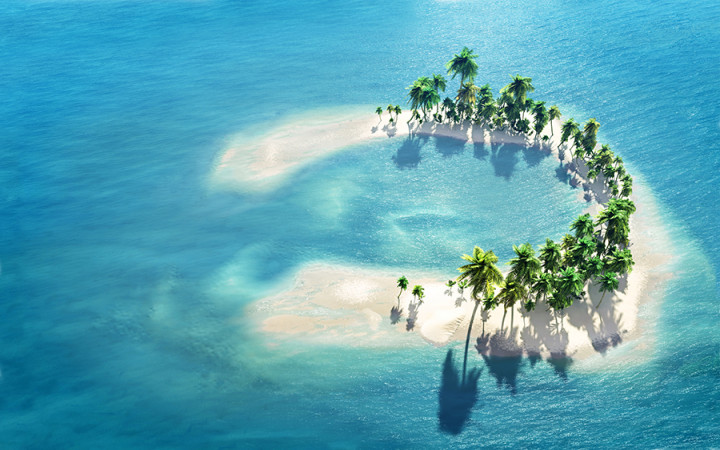We were walking around the Wonderopolis lagoon the other day when we overheard an interesting conversation between two fish:
Neil: Ah, this is the life, isn't it Dorothy?
Dorothy: You bet it is, Neil. There's nothing better than swimming around in the lagoon all day.
Neil: I love looking at the coral reef around the lagoon, too.
Dorothy: Yes! It's so beautiful. Although…
Neil: What? Oh, wait…no!...don't say it!
Dorothy: This place can really take atoll on you after a while!
Neil: *sigh* That joke takes a toll on me!
We had to groan when we overheard Dorothy's bad pun. Of course, if you're not familiar with geography, then her joke might have gone right over your head.
Why was it such a bad pun? As geography buffs know, ring-shaped coral reefs, islands, or groups of islets surrounding a central lagoon are known as atolls.
The formation of an atoll is a slow process that can take millions of years. It begins when an underwater volcano erupts, creating a buildup of lava on the seafloor. With continued eruptions, the lava continues to build until it breaks through the ocean's surface and forms an island.
Over time, hard corals, also known as hermatypic corals, begin to build a reef around the island. What we see as a coral reef actually consists of millions upon millions of the hard exoskeletons made out of calcium carbonate (more commonly called limestone) created by the corals.
At this point, the reef is called a fringing reef. It surrounds the island just below the surface of the water. Over millions of years, the ocean waves begin to erode the volcanic island in a process known as subsidence.
Eventually, the island erodes and disappears below the surface, leaving a lagoon of water surrounded by a coral reef. At this point, the reef is called a barrier reef because it protects the lagoon from the waves and winds of the ocean.
Finally, over time, ocean waves begin to break up parts of the coral reef. Pieces of coral get eroded into tiny grains of sand that pile up on the reef to form tiny islets or a ring-shaped island. Examples of atolls include the islands of the Maldives, Polynesia, and Micronesia.
Although some atolls are inhabited, many are deserted because they're remote, difficult to reach, and have few natural resources. Soil quality tends to be poor and erosion is an ongoing threat. Their pristine beaches and crystal-clear waters can be attractive to tourists, though.
Unfortunately, they can also be quite perilous. Coral reefs surrounding atolls often cannot be seen by boats, leading to countless shipwrecks on atolls over the course of history. In fact, some atolls are famous as dive sites where tourists dive along the reefs to explore old shipwrecks.
Some atolls are also famous for another reason. Their isolation and desolation makes them attractive sites to test nuclear weapons, which countries such as the United States, Great Britain, and France have done many times throughout the last century.
For example, the United States tested the first hydrogen bomb on Bikini Atoll, which is part of the Marshall Islands in the Pacific Ocean. Between 1947 and 1962, the U.S. tested over 100 nuclear weapons at the Pacific Proving Grounds, which is a series of over 2,000 atolls and other small islands. Some of these areas remain too radioactive to inhabit even today.





